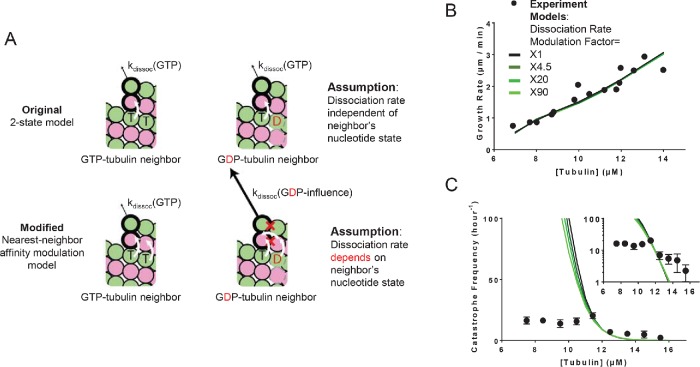FIGURE 3:
Model that incorporates nearest-neighbor modulation of the strength of lattice contacts. (A) Cartoons illustrating the differences between models without (top) and with (bottom) nearest-neighbor αβ-tubulin affinity modulation. Allowing αβ-tubulin affinity modulation requires one additional parameter: a fold increase in the αβ-tubulin dissociation rate due to the nearest-neighbor influence. Vertical white arrows indicate trans-acting nucleotides; the horizontal white arrow indicates the nearest-neighbor effect on affinity modulation. (B) Comparison between measured (black circles) and predicted (the blackest line corresponds to a onefold increase in dissociation rates and the greenest corresponds to a 90-fold increase) growth rates. All four scenarios can recapitulate observed growth rates. (C) Predicted catastrophe frequency as a function of concentration for different fold increases in αβ-tubulin dissociation rate. The y-axis is linear in the larger plot. The smaller inset graph displays the same data, but the y-axis is on log scale. Varying the magnitude of αβ-tubulin dissociation modulation has a limited effect on the concentration dependence of the catastrophe frequency.

